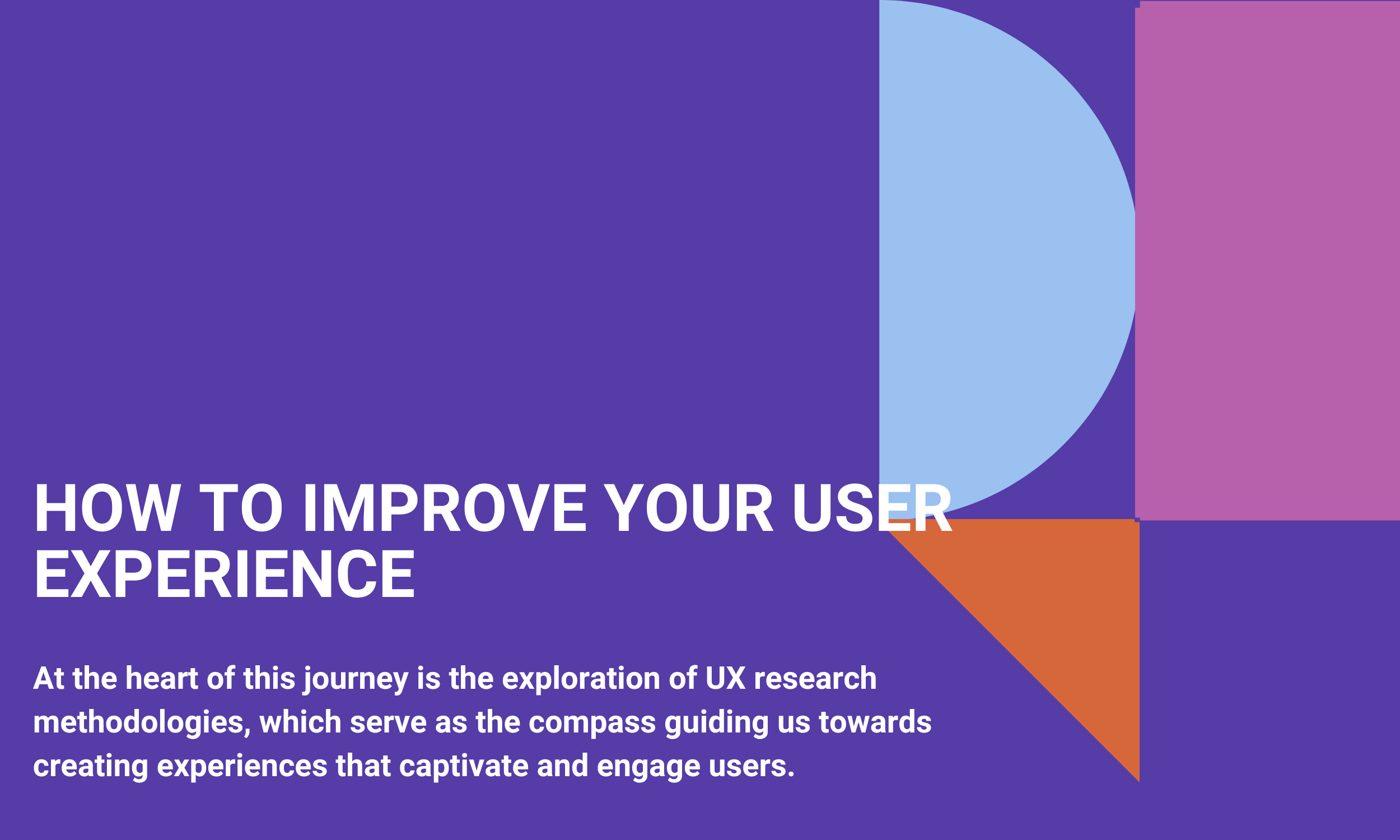Services List
Diving into the world of User Experience (UX) Design opens up a treasure trove of opportunities to connect more deeply with your audience. At the heart of this journey is the exploration of UX research methodologies, which serve as the compass guiding us towards creating experiences that captivate and engage users. Drawing inspiration from insights akin to those found in comprehensive UX research guides, this introductory piece aims to illuminate the path to understanding and employing various techniques that are fundamental in crafting user-centric designs.

Covered in this article
What is User Experience?
Understanding UX Research Methods
Key UX Research Methods
Integrating UX Research into the Design Process
What is User Experience?
User Experience (UX) refers to the overall experience of a person using a product, especially in terms of how easy or pleasing it is to use. UX encompasses all aspects of the end-user's interaction with the company, its services, and its products. The goal is to create products that provide meaningful and relevant experiences to users. This involves the design of the entire process of acquiring and integrating the product, including aspects of branding, design, usability, and function.
Example of UX in Action
Consider a mobile banking app. A well-designed app will not only have an aesthetically pleasing interface but will also make it easy for users to navigate through various services like checking account balances, transferring money, or paying bills. The app might use intuitive icons, a clear structure, and provide helpful feedback after each transaction. The result is a smooth, efficient, and satisfying experience for the user, which is the essence of good UX.
Understanding UX Research Methods
UX research methods are diverse techniques aimed at generating insights about users - their behaviour, motivations, and needs. These methods range from user interviews and surveys to more interactive approaches like focus groups and card sorting. Each method is tailored to identify user challenges and transform them into opportunities for enhancing the user experience.
Qualitative vs. Quantitative Research
Research methods fall into two broad categories: qualitative and quantitative. Qualitative research captures subjective insights into users' experiences, focusing on understanding the underlying reasons and motivations behind user behaviours. In contrast, quantitative research involves collecting and analysing numerical data to identify patterns and trends and quantifying user behaviours and preferences for more general insights.
Attitudinal vs. Behavioural Research
Attitudinal research delves into understanding users' attitudes, perceptions, and beliefs. This subjective approach often involves surveys or interviews to capture emotions and opinions. Behavioural research, on the other hand, focuses on actual user actions, relying on observation methods like usability testing or heat maps to understand user behaviour.
Generative vs. Evaluative Research
Generative research is centered on generating new ideas and insights to fuel the design process, often involving brainstorming sessions or card sorting. Evaluative research, conversely, assesses the usability and effectiveness of existing designs or prototypes, using methods like A/B testing to ensure the design meets user needs.
Key UX Research Methods
Several UX research techniques stand out for their effectiveness and common usage:
- User Interviews: Involving one-on-one discussions, these are best used at the start and end of a project for qualitative, generative insights.
- Field Studies: Observing users in their natural environments provides qualitative, behavioural insights throughout all project stages.
- Focus Groups: Facilitated group discussions are ideal at the project's beginning and end for qualitative, generative insights.
- Diary Studies: Users track their interactions with a product, useful at the start of a project for qualitative, evaluative insights.
- Surveys: Useful at all stages, surveys can be both qualitative and quantitative, catering to attitudinal, generative, or evaluative needs. Surveys may include both open and closed questions.
- Card Sorting: This technique, where users group information in a way that makes sense to them, is ideal at the project's start for qualitative, generative, and attitudinal insights.
- Tree Testing: Assessing the organisation of information as users navigate an interface, best for the start of design or redesign processes for quantitative, behavioural, and evaluative insights.
- Usability Testing: This involves users performing tasks in a controlled setting, suitable for all stages for qualitative, behavioural, and evaluative insights.
- Five-Second Testing: Collecting immediate impressions within a short time frame, ideal during initial ideation and design for attitudinal and evaluative insights.
- A/B Testing: Comparing two versions of a solution, suitable for all stages.
.png?width=850&height=550&name=Subheading%20(1).png)
Integrating UX Research into the Design Process
In the grand scheme of UX design, research methods are not standalone entities but integral components of a holistic design process. Each method contributes uniquely to understanding the user, informing design decisions at various stages. From initial concept development, where generative methods like user interviews and card sorting play a key role, to the refinement and evaluation phase, where techniques like usability testing and A/B testing become crucial, UX research methods provide the necessary insights to create user-centric designs.
By employing a mix of these methods, designers can craft a comprehensive understanding of their users, leading to more empathetic and effective design solutions. Whether it's understanding user motivations, behaviors, or preferences, these research methods provide a robust foundation for making informed design decisions.
In conclusion, UX research methods are indispensable tools in the UX designer's arsenal. By judiciously applying these methods, designers can ensure that their creations are not just aesthetically pleasing but also deeply aligned with user needs and expectations, ultimately leading to enhanced user satisfaction and engagement.
Ready to elevate your digital presence? Contact Velocity for expert web design and development services that resonate with your audience and drive success.




